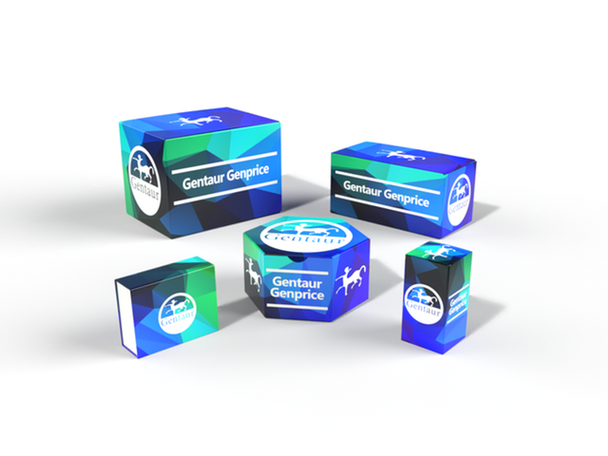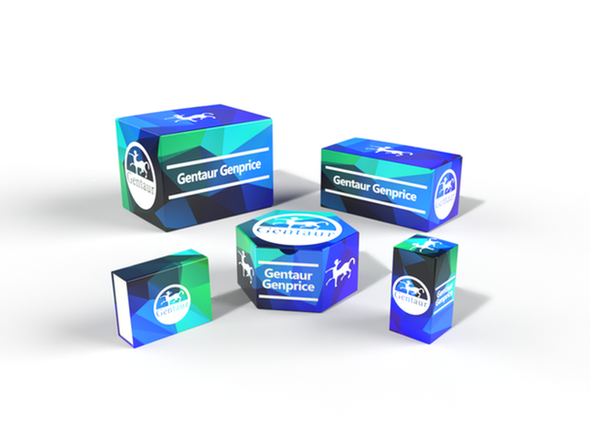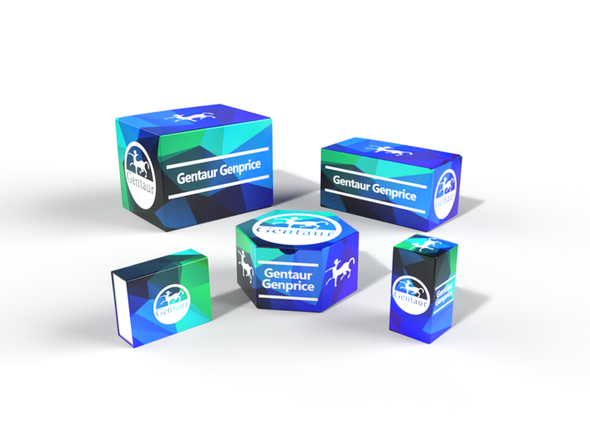Description
UNG2 Antibody | 7353 | Gentaur UK, US & Europe Distribution
Host: Rabbit
Reactivity: Human, Mouse
Homology: N/A
Immunogen: UNG2 antibody was raised against a 17 amino acid peptide near the amino terminus of human UNG2.
The immunogen is located within the first 50 amino acids of UNG2.
Research Area: Innate Immunity
Tested Application: E, WB, IF
Application: UNG2 antibody can be used for detection of UNG2 by Western blot at 1 - 2 μg/mL. For immunofluorescence start at 20 μg/mL.
Antibody validated: Western Blot in mouse samples and Immunofluorescence in mouse samples. All other applications and species not yet tested.
Specificiy: At least two isoforms of UNG2 are known to exist; this antibody will only detect the longer isoform. UNG2 antibody is predicted to not cross-react with UNG1.
Positive Control 1: Cat. No. 1212 - 3T3 Cell Lysate
Positive Control 2: Cat. No. 17-201 - 3T3/BALB Cell Slide
Positive Control 3: N/A
Positive Control 4: N/A
Positive Control 5: N/A
Positive Control 6: N/A
Molecular Weight: Predicted: 34 kDa
Observed: 33 kDa
Validation: N/A
Isoform: N/A
Purification: UNG2 Antibody is affinity chromatography purified via peptide column.
Clonality: Polyclonal
Clone: N/A
Isotype: IgG
Conjugate: Unconjugated
Physical State: Liquid
Buffer: UNG2 Antibody is supplied in PBS containing 0.02% sodium azide.
Concentration: 1 mg/mL
Storage Condition: UNG2 antibody can be stored at 4˚C for three months and -20˚C, stable for up to one year.
Alternate Name: UNG2 Antibody: DGU, UDG, UNG1, UNG2, HIGM4, HIGM5, UNG15, DGU, Uracil-DNA glycosylase
User Note: Optimal dilutions for each application to be determined by the researcher.
BACKGROUND: UNG2 Antibody: The human uracil-DNA glycosylase (UNG) gene encodes both mitochondrial (UNG1) and nuclear (UNG2) forms through differentially regulated promoters and alternative splicing. UNG2 is the major enzyme in the base excision repair pathway that removes uracil residues from DNA that arise through either misincorporation during replication or cytosine deamination. UNG2 can also be bound by the HIV-1 integrase and incorporated into the virion particle, suggesting that it is required to remove uracils from the viral genome. As the intrinsic antiviral protein APOBEC3G generates numerous uracils in the HIV genome during its replication, it may be that the UNG2 contributes to the APOBEC3G-mediated loss of infectivity by generating abasic sites in the viral genome.






